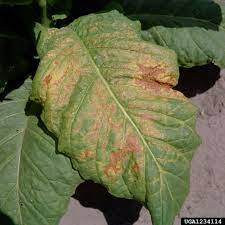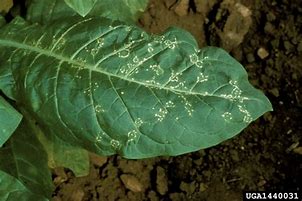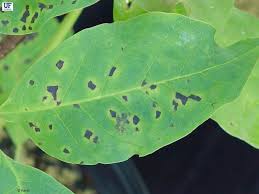

Menu
⮞ About
About...
Tobacco, a broad-leafed plant, thrives in warm climates, Its large, green leaves are harvested for various smokes, Cultivation involves nurturing seedlings to maturity, Harvesting is done by picking leaves or cutting the plant, After harvest, leaves undergo curing for flavor and quality, Tobacco farming faces scrutiny due to health concerns, Regulations and awareness campaigns aim for better practices, Efforts promote alternatives for sustainable agriculture, The plant belongs to the nightshade family, Solanaceae, Tobacco's cultivation and use have a complex history.
diseases & its fertilizer

mosaic virus symptoms:
Tobacco mosaic disease (TMD) is a viral infection caused by the Tobacco mosaic virus (TMV), affecting various members of the Solanaceae family, particularly tobacco plants (Nicotiana tabacum). TMV is known for its ability to cause mosaic-like patterns on leaves, stunting plant growth, and significantly reducing crop yields. The disease poses a substantial threat to the global tobacco industry, impacting both economic and agricultural aspects
mosaic virus solution:
⮞ Spraying plants with 20% non fat dry milk has been shown to some what effective in preventing the spread of virus.
⮞ By spraying neem oil.
⮞ Prevent it by using insectidal soap . home made mix together in water some chopped mint, ash, garlic, tobacco and not more than one table spoon soap.

Tobacco ringspot virus (TRSV) Symptoms:
Tobacco ringspot virus (TRSV) caused a severe disease of tobacco in Virginia in the 1920s. Symptoms initially were severe necrotic rings with green centers, and a pattern of necrotic lines described as an 'oak-leaf' pattern.
Tobacco ringspot virus (TRSV) Solution:
⮞ Crush or finely chop garlic cloves and onions.
Macerate the crushed cloves or onions in water. You can use a ratio of approximately one cup of chopped garlic or onion per gallon of water.
Let the mixture sit for a few hours or overnight to allow the active compounds to be released into the water.
Use a spray bottle or a garden sprayer to apply the solution to your tobacco plants. Ensure complete coverage, including the undersides of leaves.

Blackroot rot disease Symptom:
Large scars may appear on the main tap root. These scars resemble mechanical damage, but roots damaged by black root rot are darker in color than those injured mechanically. The above-ground symptoms are stunting and irregular growth of the tobacco. Temporary nutrient deficiency symptoms may appear on affected plants
Blackroot rot disease Solution:
⮞ Compost and Organic Matter:Incorporate well-rotted organic matter, such as compost, into the soil. This can improve soil structure, drainage, and promote a healthy microbial community that may suppress the pathogen.
⮞ Garlic and Onion Extracts: As mentioned earlier, garlic and onion extracts may have antifungal properties. Incorporate these extracts into a soil drench or use them as a foliar spray. Ensure proper dilution and test on a small area before widespread application

Bacterial leaf spot disease symptom:
Bacterial leaf spot disease Solution:
⮞ Aloe Vera Extracts:Some studies suggest that aloe vera extracts may have antimicrobial properties. Aloe vera solutions can be used as a foliar spray to potentially suppress bacterial leaf spot.
⮞ Compost Tea: Compost tea, made from well-aged compost, can enhance soil health and promote beneficial microbial activity. Healthy soils contribute to plant resistance against diseases

Downy mildew disease Symptom:
Some of the leaves exhibit grey to bluish downy mould on their lower surfaces. Diseased leaves can become twisted, such that the lower surfaces turn upwards. In such cases, the bluish colour of the diseased plants becomes quite conspicuous, especially under moist conditions when sporulation is abundant.
Downy mildew disease Solution:
⮞ Drip Irrigation: Use drip irrigation or water at the base of plants rather than overhead irrigation. Wet foliage can create ideal conditions for the spread of downy mildew.
⮞ Milk Sprays: Some studies suggest that milk and milk-based solutions may have antifungal properties. Mix diluted milk (1 part milk to 9 parts water) and spray it on the foliage. Repeat every 7-14 days. This method is considered a preventive measure and might not completely eliminate the disease
⮞ Baking Soda Solution: A solution of baking soda (sodium bicarbonate) mixed with water can be used as a foliar spray. Mix 1-2 teaspoons of baking soda in a gallon of water and apply every 7-14 days. This method may help reduce the severity of downy mildew.